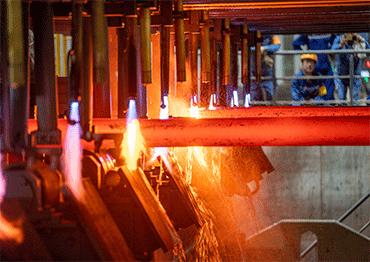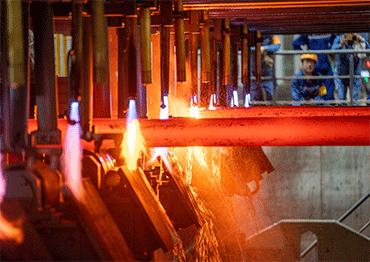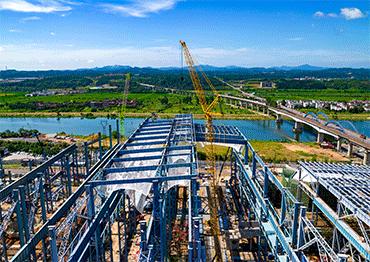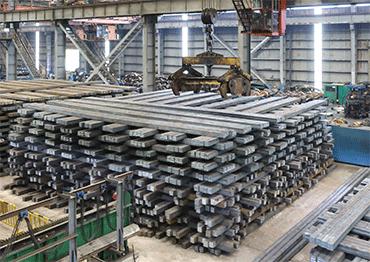While changes are necessary, steel companies face the challenge of balancing the costs and benefits of the transition.
“The main obstacle to the widespread use of low-carbon automotive steel is the price. Automakers want the price to be the same as or only slightly higher than conventional steel. However, transforming steel companies requires investment, which inevitably drives up prices and creates a green premium. Meanwhile, automakers are under great pressure to reduce costs,” Zhao said.
“Steel doesn’t account for too much in the cost of automaking, around 5,000 yuan (US$685) per vehicle. But due to the current stiff competition among automakers, especially ones with a big output, increasing the per vehicle cost by 5 yuan (US$0.7) requires approval from the board of directors at some companies,” Zhao said.
Replacing blast furnaces with electric arc and hydrogen technology comes at a significant cost.
A climate action report by China Baowu Steel Group, one of the world’s biggest steelmakers, said it invested 1.89 billion yuan (US$259m) in hydrogen-based furnace technology in 2021, which produces 1 million tons of steel, just 2 percent of its annual output. The cost to transform all its plants would run to 94.5 billion yuan (US$13b), based on these figures.
The cost of green hydrogen is another barrier. According to the Energy Research Institute, hydrogen produced via green electricity and water electrolysis costs about twice that of hydrogen produced using fossil fuels.
The cost of scrap steel, electricity and particularly green electricity all contribute to the high cost of using EAF technology to produce steel, which is why China is still dominated by blast furnace technology.
“In some countries, EAF steel accounts for 30-60 percent of total production. In 2022, when the MIIT released the guideline to boost the steel industry, EAF steel cost 200-300 yuan (US$27-41) more per ton,” a man from a private steel company said on condition of anonymity.
Shi Huien said that as coke and coal prices have declined it costs even less to make blast furnace steel, while the end product of both processes costs about the same. This means the value of low-carbon production is not reflected in the pricing.
Zhao believes that if a steel company can lower costs and reduce emissions, it will certainly gain more market share. But there is a disconnect between producers and customers. Steel companies want their green products to get a higher green premium while their customers hope for the opposite. “The tug of war will continue,” Zhao said.
Steel companies could prioritize stable demand over higher prices, according to industry experts.
“Producing low-carbon products no doubt increases cost, particularly in the initial stages of transformation, which needs customers to share the pressure and cost of carbon reduction. But few downstream companies are able to bear the green premium. The actions of big companies that are pioneers in purchasing low-carbon steel need to be expanded,” Lin Zixin said.
An added complication is the lack of domestic and international certification standards, which makes it harder for companies to identify the amount of carbon reduction levels of steel products. “This uncertainty in turn makes it difficult for steel companies to make investment decisions for the transition,” Lin said.
Besides market recognition, other tools including carbon markets and green financing could be used to help steel companies absorb and decrease the cost of the transition.
In December 2024, the Institute of Public and Environmental Affairs, a Beijing-based non-profit organization on environment research, published a report on carbon reduction along the automobile and steel and aluminum supply chain. It recommended a range of measures to increase the costs of high-carbon materials, such as taxes, and incorporating key raw materials such as steel and aluminum into the carbon emission trading market.
The report also suggests financial institutions and investors use tools like green financing to support automobile and steel and aluminum companies to scale up advanced technologies.
In September 2024, the Ministry of Ecology and Environment released a draft guideline that aims to incorporate the cement, steel and aluminum industries into the national carbon emission trading market. This means emissions will become part of a company’s production costs, which should drive down the cost of low-carbon steel.
“It’s crucial for steel companies to enhance their carbon management. No matter if it’s because of inclusion in carbon market management, complying with international trade rules like the CBAM or securing downstream recognition and procurement of low-carbon steel, or to obtain green financial support, they will all need to disclose their carbon emissions,” Lin Zixin said.

 Old Version
Old Version


